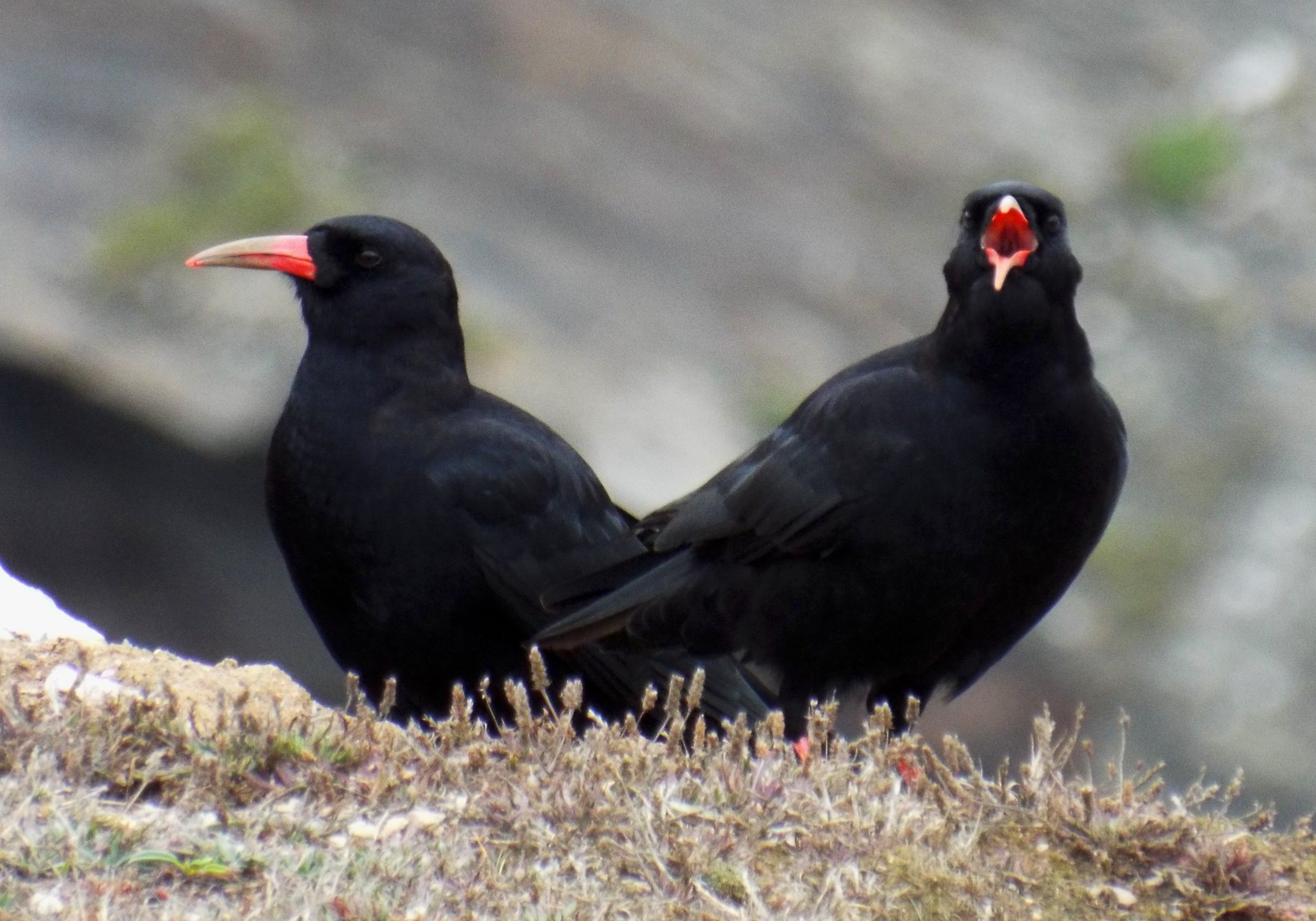OTHER NAMES: Chough
Latin Etymology: Pyrrhocorax ("flame raven") pyrrhocorax ("flame raven")

Two Red-billed Chough (subspecies P. p. pyrrhocorax) in Cornwall -September 2020
Featured Subspecies: Pyrrhocorax pyrrhocorax pyrrhocorax
Weight: 280-385g / Length: 39-40cm / Wingspan: 73-90cm
Red-billed Choughs are the rarest member of the crow family in the UK, having much more specialized habitats than any of the others. Generally just known as chough in the UK for lack of Alpine Choughs in the country. They require cliffs to next and generally prefer grazed land as their diet consists largely of insects found within the dung. Distinctive amoung British crows for their bright curved red beak, they are only found in Western Scotland, Wales, Ireland and a small, recently reestablished population in South-West Cornwall. In Spain, they are a bit more common - still mostly found in areas with cliffs, but much more broadly, even to the point of being found on cliffs on the outskirts of Madrid itself. They are strongly associated with Cornwall though within the UK, despite being absent from the country for nearly 30 years they remained the county bird and can be seen on the county coat of arms.
Related Species:
Order: Passeriformes
Family: Corvidae
Genus: Pyrrhocorax
Subspecies: P. p. pyrrhocorax, P. p. erythroramphos, P. p. barbarus, P. p. docilis, P. p. centralis, P. p. himalayanus, P. p. brachypus, P. p. baileyi
- Sighting Locations -
UNITED KINGDOM - Rare and local breeding resident in the North and West (250-350 pairs) plus 120-150 pairs on the Isle of Man.
- Pair seen at Lizard Point in June 2012. At least eight at a less publically advertised site in September 2020.
SPAIN - Spanish - Chova Piquirroja ("Red beaked chough")
- MADRID 2016 TRIP: Pairs seen at Monfrague National Park and Laguna Campillo
Widespread though rarely numerous resident in suitable habitats.
Further Notes: BirdForum Opus, IUCN Red List, RSPB, Wikipedia, Xeno-canto

No comments:
Post a Comment